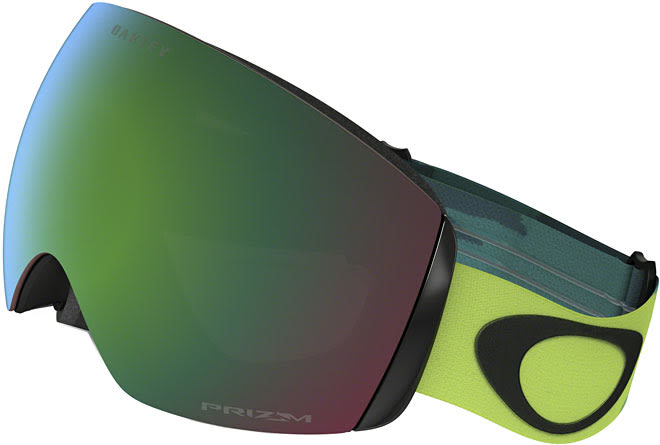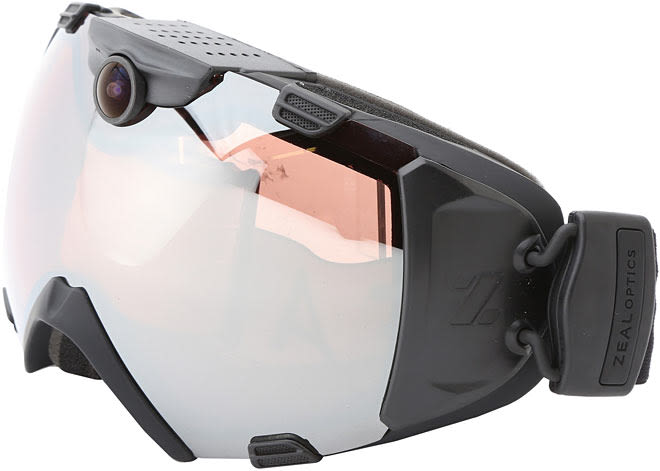Ski goggles: A buyer's guide for skiers and snowboarders

To find ski goggles with the best fit, best lens colour and best price for your needs, follow these 12 tips:
1. Shop before you get to the mountain.
Try a well-stocked sporting goods store, ski and boarding shop, or specialty optical store. You'll probably pay less, and you'll have more time to make a smart decision.
Don't shop at a snow resort unless you have to. There are exceptions, but many resorts have a limited selection and inflated prices.
2. Ask questions.
There are so many different products and features out there that it can be hard to choose. You need a salesperson who has worn them and knows which lenses work best in which conditions.
If the sales assistant seems uninformed or unwilling to answer questions, try a different store.
You can also shop on the internet. Most of the big snow goggle manufacturers provide a lot of product details on their websites.
3. Take your time, and try on as many goggles as you can.
And take them outside (with the assistant's permission), to see how well the lenses work in natural light.
If you're buying clear lenses for night skiing, test them in a dark room with one light bulb on. You want to make sure they'll be distortion- and glare-free when you look at lights along the trail or the half-pipe.
Don't make a snap decision, because the wrong equipment can ruin your time in the snow.
4. Choose the right lens tint.
Weather, terrain and activity are all important factors when choosing lens tint. Think about where you usually ski or snowboard: Is the mountain sunny in the morning, the afternoon or all day? Do you like smooth trails or more challenging areas like moguls, terrain parks and trees?
Your goal is to get the tint that will provide a good combination of colour definition, contrast, depth perception and eye fatigue protection, all with the right light transmission factor (LTF) for your light conditions.
A low LTF number (such as 15%) means less eye fatigue on sunny days and a high LTF number (such as 70%) means better colour and depth perception on low-light days.
In low light and fog, yellow, gold and amber lenses filter out blue light, emphasising shadows in the snow so you can see bumps better. They also work well in moderate and variable light conditions.
Light rose and rose copper lenses are also excellent on low-light days.
In bright light, dark tints such as copper, dark brown, dark grey and dark green will keep your eyes more comfortable while they increase contrast. Grey lenses are also good for seeing true colours.
A mirror (or "flash") coating enhances the effectiveness of tinted lenses by reflecting sunlight so it doesn't penetrate the lens. This lowers the LTF of the lens and makes it a great choice for bright, sunny days.
For sunset and nighttime, use only clear lenses, since they have the highest LTF and allow the most light to come into your eyes.
Consider goggles with photochromic lenses, which become lighter or darker automatically as the light changes. They are available in a variety of colours, including grey and brown.
Interchangeable lenses are becoming more common in ski goggles and sports sunglasses. They let you switch lenses when light conditions change.

Several manufacturers offer ski goggles specifically for faces with shallow nose bridges and high cheekbones. Shown is the Asia Fit version of Oakley Flight Deck XM Prizm with a rimless design.
Check out the lens colour charts on the websites of ski goggle manufacturers. It can be difficult to choose among the many lenses available now, but the manufacturers' charts usually specify how much LTF the tints provide and which light conditions they work for best.
In fact, when choosing a ski goggle, look at lens features first. Lenses are the most important part — everything else is either the support system or the fashion statement.
5. Protect your eyes from glare.
Polarized lenses reduce glare from sunlight reflecting off the slopes and are great when it's bright out. But they may not be ideal near the end of the day, when long shadows appear in the snow, because they are usually made with a darker tint than most sun lenses.
6. Insist on ultraviolet light protection.
UVA and UVB are the most important rays to guard against. Too much exposure to UV rays on a short-term basis can give you a painful sunburn on your eyes, called photokeratitis. Long-term, UV rays can damage your eyes permanently and may lead to cataracts and other eye diseases. Look for goggles and sunglasses that block 100% of UV rays, which bounce off the snow and into your eyes, even on cloudy days.
7. Look for good peripheral vision.
Lower-profile styles tend to fit better with a helmet and look more fashionable than traditional styles with large lenses. But if you choose the low-profile look, make sure you have enough peripheral (side) vision — some goggles don't provide as much visibility as you need.
Ideally, you should be able to see 180 degrees from side to side to help you avoid skiers and snowboarders. If you prefer sunglasses, choose a wraparound style with as little distortion at the sides as possible.
8. Make sure the goggles fit.
Take the time to adjust the strap to properly fit your head. If the strap is too difficult to adjust, or if the buckle doesn't stay where you put it, move on.
Make sure the goggles will fit with or without a helmet. Even if you don't use a helmet now, you may in the future.
Some goggle styles have softer, more rubbery buckles that won't dig into your scalp. Wider bands are typically more comfortable than narrower ones, and foam inserts keep out wind, ice and dirt. The foam should be thick enough to help cushion your face if you fall, but not so dense that it causes your lenses to fog. The salesperson should be able to help you make this judgment.
If you have high cheekbones and/or a shallow nose bridge, consider a goggle that is designated "Asian fit." Manufacturers also produce more goggles for narrow and extra-wide faces.
If you wear glasses, make sure the goggles will fit over them — some goggles are designed specifically for this.
And many optical stores, especially those near ski areas, will make prescription inserts for goggles so you won't need glasses at all. However, wraparound sunglasses and ski goggles can't always accept prescription lenses because of the frame's extreme curvature. An eye care professional will know which frames are prescription-suitable and will be able to order and fit them for you.

Bring an anti-fogger, such as these Defog It dry anti-fog cloths in a resealable pouch. Other options are anti-fog solutions (let them dry before you start) and fog erasers that include a sponge on one side and a soft cloth on the other side.
9. Look for anti-fogging features.
Choose goggles with double lenses that discourage condensation from forming when the warm air of your breath makes contact with the cold lenses. Anti-fog coating inside the goggles helps, while vents along the sides, top and bottom clear the warm air out from inside the goggles.
Wider vents tend to prevent fogged lenses better than narrow vents or tiny vent holes, but with more exposure to outside air, they also make it easier for your face to get cold.
At least two manufacturers have goggles with tiny fans; they pull air in through one set of vents and send it out through another set. The fans are light, though they do require a AAA battery.
10. Make safety a priority.
Most goggles and sunglasses made for fast-moving winter sports have polycarbonate lenses, which are much more impact-resistant than regular plastic. If you get prescription inserts, you'll want these to be made of polycarbonate as well.
The more flexible the frame and lens, the less likely the lens will break or pop out in a bad fall. Foam inserts at all impact points are important. Some manufacturers now use polar fleece as padding; it's cushiony and warm, and it does a good job of wicking sweat from your skin if you become overheated.
For sunglasses, look for polycarbonate or other impact-resistant frame materials rather than metals. Adjustable rubber earpieces and nosepieces will keep them on better when you're tackling bumps and might be more comfortable than hard plastic materials that don't adjust.
11. Look for special features.
A scratch-resistant coating will help your goggles and sunglasses last longer, especially if you like ski runs where there's a lot of brush or you tend to fall a lot. Always keep your eyewear in a soft pouch or lined case when not in use.

This Zeal Optics Base goggle has a built-in camera and HD video recorder so you can easily capture your wildest rides down the slopes.
Some ski goggles have nose guards designed to keep you warm and protect your nose in a fall. However, a warm nose might contribute to fogging, and landing on a hard nose guard might be just as bad for your nose as landing on the snow's surface. So consider your skiing style before buying this type of goggle.
The ability to shoot photos and videos is available on some goggles, along with built-in GPS that lets you track your speed, altitude, location, jump stats and more — all in real time.
And if you're extremely particular about how your goggles look, consider customizing a pair with your choice of frame color, strap pattern, lens tint and more. In fact, some manufacturers will even etch the lenses with words of your choosing.
12. Understand the warranty and return policy.
Many stores will only take returns on undamaged goggles. If you do scratch the lenses, some manufacturers will replace your lenses (usually for a fee) if you send them the goggles or sunglasses.
Once you find a new pair of ski goggles, it's still important to bring your old pair with you the first time out. That way, you'll have a backup for the rest of the day if the new ones don't work out.
SEE RELATED: Protective sport glasses and goggles: How to choose
Page published on Wednesday, 16 March 2022






